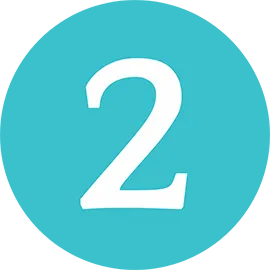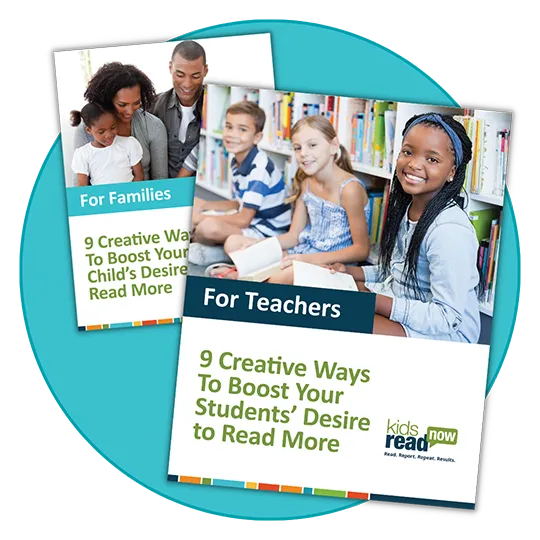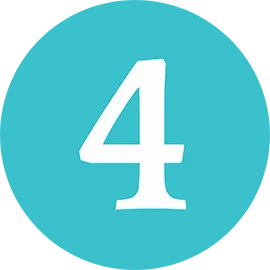Estimated reading time: 10 minutes
As curriculum directors and coordinators, you have the power to revolutionize reading education in your districts. With the next benchmark assessment window looming, you know you need to do everything possible to ensure a significant increase in student reading proficiency.
But let’s be honest…
Winter break is just days away, and everyone’s exhausted! With well-deserved holiday relaxation on the horizon, now might not be the best time for big asks and heavy lifting.
Still, every minute counts, and this time of year provides much-needed practice opportunities for elementary-aged readers. If your students engaged in regular, meaningful independent reading both in and outside of school, just think how comprehension and fluency would soar!
Here are seven actionable, research-backed initiatives you can spearhead at the district level to dramatically and quickly increase student reading achievement… beginning in January…

Engineer a District-Wide Reading Framework
💪 Impact on reading achievement:
- Establishing a system of consistent practices across schools ensures that students receive equitable access to quality literature and ample time to practice reading independently.
- A unified framework supports early identification and intervention for students struggling with reading, preventing learning loss before it occurs.
🎬 Implementation in your district:
- Collaborate with literacy specialists and instructional coaches to refine the reading framework based on current best practices. Accordingly, leverage their relationships with teachers to determine a scope that’s realistic.
- Show teachers examples of how to integrate aspects of the framework throughout their day. By all means, skip the meetings and create a Loom video of you speaking and screen-sharing — fast and simple!

Prioritize Professional Development Beyond the Science of Reading
💪 Impact on reading achievement:
- Targeted PD around independent reading can challenge teachers to get creative with assessment and text selection within the context of the Science of Reading.
- Teachers trained in diverse and nuanced independent reading practices can accommodate a wider spectrum of academic needs, as well as strategically value students’ interests and choices in literature, all of which link to higher literacy achievement.
🎬 Implementation in your district:
- Studies of teachers who successfully implement independent reading practices in their classrooms show they value the importance of both the quantity and quality of student reading. Seek out these teachers in your district, and ask them to volunteer as models for others.
- Compile a list of important topics, then ask teachers what they need. Implement a follow-up system that involves staff in evaluating the effectiveness of PD and its impact on their classroom practices.

Engage and Educate Parents and Caregivers
💪 Impact on reading achievement:
- Engaging parents in their child’s reading journey has been shown to significantly boost children’s literacy and academic success throughout their school careers, according to the Harvard Family Research Project.
- When caregivers encourage independent reading at home, they can greatly impact their children’s reading fluency and comprehension. Successful reading can’t happen without both of these critical skillsets.
🎬 Implementation in your district:
- Develop resource kits and guides for parents, focusing on how they can support reading at home.
- Host parent workshops and reading nights to demonstrate effective reading strategies and foster a community around literacy.

“As a parent and teacher that has used Kids Read Now for years, I am so excited by the results!”
– Malane B., K-5 Classroom Teacher, Ohio

“My daughter would get mail and reread until the next book came. Kids Read Now books are her favorites.” – Review by 1st Grade Parent, Ansonia

“My boys love checking mail for books always at their level. It’s perfect every year!” – Danielle, 2nd Grade Parent, Brighton Area Schools, MI
Free Teacher & Parent Pack!
Boost their desire to read: two packs with three game templates created by literacy experts sure to tempt students of all reading levels to pick up a book and begin reading!


Champion Reading Mentorship Programs
💪 Impact on reading achievement:
- Mentorship programs, particularly peer mentoring, have been shown to improve reading fluency and comprehension in younger students.
- Mentoring provides individualized attention, which can be especially beneficial for struggling readers, students from families with low parent involvement, and populations with structural barriers.
🎬 Implementation in your district:
- Partner with local high schools, community colleges, universities, and community organizations to recruit and train mentors. Teacher education programs are full of motivated and qualified adults!
- Coordinate with school principals counselors to match mentors with students who would most benefit from additional support.

Curate a Shared Library of Culturally Responsive Texts
💪 Impact on reading achievement:
- As you know, exposure to a wide range of culturally diverse texts increases engagement and comprehension.
- Culturally responsive texts help in meeting the needs of a diverse student population, fostering inclusivity and providing cross-curricular connections with SEL.
🎬 Implementation in your district:
- Collaborate with librarians and teachers to build a diverse collection of texts. In fact, they likely already have readymade lists for many topics or demographics.
- Leverage digital platforms to make these resources widely accessible. Plus, technology can motivate students of all ages.

Utilize Data-Driven Decision Making
💪 Impact on reading achievement:
- As with any subject, using data to inform instruction helps teachers to tailor their pedagogy to meet the specific needs of their students, improving reading outcomes on a broad scale.
- Regular assessment and analysis of reading progress help measure the effectiveness of reading initiatives, including gaps and shortcomings. To this end, show teachers how they can use the data they’ve already collected to evaluate independent reading practices.
🎬 Implementation in your district:
- Implement systems for regular data collection and analysis on student reading progress — but don’t reinvent the wheel! How can you disaggregate or repurpose data you already have to measure improvement?
- Organize data review sessions with teachers and instructional coaches to adapt teaching methods and interventions based on findings. Specifically, zero in on their schedules to identify where independent reading could take place.
71% of 3rd-5th graders’ reading levels increased!
At Gregg School, where we have participated for three years, we were pleasantly surprised to discover that 71% of our students grew one or more reading levels from June to September and 26% remained the same. This is an incredible accomplishment…
“…and we attribute the fact that 97% of our returning 3rd-5th grade readers maintained or grew their skills over the summer break to their participation in the Kids Read Now program!”

Lean on Community Partnerships
💪 Impact on reading achievement:
- Community partnerships can provide additional resources and support, both human and financial, increasing opportunities for students.
- Partnerships help spread awareness about the state of learning loss in your community, . Plus, networking is never a bad thing!
🎬 Implementation in your district:
- Build relationships with familiar businesses, libraries, neighborhood centers, BASPs, nonprofits, banks, rec centers, foundations, your city council, local officials, and other nearby organizations. No contribution is too small, and on the other hand, the sky’s the limit!
- Organize — or delegate — events such as read-a-thons and reading festivals to promote literacy and engage the wider community in meeting the district’s reading goals. (Just think! Title I parent involvement requirements — fulfilled.)
Align district-wide independent reading with your improvement plan
By implementing even one of these strategies, you can surely reignite your colleagues’ passion for student voice and choice.
Of course, you’ll tailor your approach to independent reading district-wide to directly align with your CIP. Remember, the key is to utilize your leadership skills and network of support to unify the efforts of administrators, educators, families, and the community.
With your guidance — and plenty of practice — even your hardest-to-motivate students can meet benchmarks. It’s not too late to boost benchmark scores, and most important, nurture a lifelong love of reading.
Frequently Asked Questions
Answer: Independent reading is when students read self-selected materials at their own pace, fostering a personal connection with reading. Learning loss will continue unless students make accelerated growth, which requires designated practice time. Independent reading is critical for bolstering fluency, comprehension, and a positive attitude towards reading. In other words, district-wide independent reading initiatives strengthen literacy for students of all ages from all backgrounds.
Answer: A systematic district-wide reading framework establishes consistent, research-based literacy practices across all schools. Accordingly, this ensures equitable access to high quality materials and ample practice opportunities. From effective instruction based in the Science of Reading to streamlined assessments to determine effectiveness, reading frameworks build time for independent reading district-wide.
Answer: Success is often measured through surveys of student reading attitudes, tracking of independent reading frequency, and assessments of reading fluency and comprehension at regular intervals (e.g., CBM, progress monitoring). Additionally, examining trends in benchmark assessment scores can provide insights that drive the direction of reading programs.
Question: How does Kids Read Now support independent reading district-wide?
Book Distribution: Your students receive books to keep and read over and over the time frame of your choosing. )ur summer program is undoubtedly where it all started, and remains a top choice by school district partners. Book selections include a diverse range of titles to cater to your students’ different interests and reading levels.
Accessibility and Inclusivity: The program aims to be accessible to all children, especially those in underserved communities or schools with limited resources.
Educational Focus: Kids Read Now’s approach is informed by educational research, including the Science of Reading. Correspondingly, Kids Read Now focuses on methods and practices that effectively promote reading and literacy.
Family Engagement: The program involves your parents and guardians by providing them with tools and resources to support their child’s reading, including reading guides, tips for encouraging reading at home, and ways to engage with the self-selected books.
Tracking and Reporting: Kids Read Now tracks which books your students have read. Simultaneously, they provide feedback and reports on progress.


